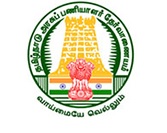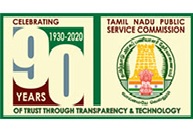TNPSC Forestry Exam Syllabus : Tamil Nadu Public Service Commission
Organisation : Tamil Nadu Public Service Commission (TNPSC)
Exam Name : TNPSC Forestry Examination
Standard : PG Degree Standard
Subject Code : 283
Announcement : TNPSC Forestry Exam Syllabus
Website : https://www.tnpsc.gov.in/English/new_syllabus.html
TNPSC Forestry Exam Syllabus
TNPSC Forestry Exam Syllabus are given below,
Related / Similar Syllabus : TNPSC History Exam Syllabus

UNIT- I: Silviculture
Forests – definition. Extent of forests in India and other countries. Forest types of India and Tamil Nadu – revised classification – pure and mixed stands – even and uneven aged stands. Role of forests. Factors of locality – climatic – edaphic – topographic – biotic – interaction of forest with the environment. Silviculture – objectives – scope – general principles. Regeneration – natural and artificial. Nursery techniques – containerised seedling production – techniques and methods. Vegetative and clonal propagation techniques and methods – macro and micro propagation techniques. Plantation forestry – reforestation and afforestation.
UNIT – II: Forest Mensuration And Management
Forest Mensuration – Definition and objectives. Measurement of diameter, girth, height, crown and volume of trees – methods and principles – tree stem form – form factor. Volume estimation of stand – age – basal area determinations Stem and Stump Analysis. Forest inventory – sampling techniques and methods – measurement of crops – sample plots. Yield calculation – CAI and MAI – volume, yield and stand tables preparation. Forest management – objectives and principles. Forest organisation. Sustainable Forest Management (SFM) – criteria and indicators of SFM – sustained yield – concept and management – arguments for and against sustained yield – Forest Certification – Standards, Procedures and agencies. Rotation – normal forest – increment – growth stock determination. Yield regulation – principles and concepts – Von Montel’s formula and its modifications – yield regulation in regular and irregular forests. Working plan – objectives and scope – constitution of working plan division. Enumeration and sampling. Regeneration survey – Plantation journal – divisional working plans – annual plan of operations. Joint forest management. Aerial photography and remote sensing – methods and techniques – GIS for forest management and modelling.
UNIT- III: Forest Utilisation And Wood Technology
Logging – extraction of timber – felling rules and methods – conversion methods – conversion season. Implements used – cross cutting system – sawing – different types – extraction methods. Grading of timbers. Transportation of timbers – major and minor transportation methods Storage and sales of logs – sales depot – management of depots. Recent trends in logging – Ergonomics and RIL. Forest products – Timber – timber, fuel, pulp, paper, rayon and match. Wood Composites – plywood, particle board, fiber boards, MDF, hardboard, insulation boards – production technology. Non timber forest products (NTFP) – collection – processing and storage of NTFP – fibres and flosses – bamboos and canes – katha and bidi leaves – essential oils and oil seeds – gums and resins – tans and dyes – drugs – insecticides – lac and shellac – tassar silk – role of tribal co-operative societies. Wood Science – Macroscopic character of wood – three dimensional structures – structure of heartwood and sapwood – hard wood and soft wood. Composition and structure of wood – chemical components and cell wall structure and formation. Anatomical structures of heartwood and softwood – reaction wood – wood and water relations. Properties of wood – physical properties – specific gravity, density of wood – mechanical properties – gross features of wood. Defects in wood – natural defects. Seasoning of wood – principles and objectives of seasoning – seasoning methods – air and kiln seasoning – seasoning defects. Wood preservation – principles and methods – wood preservatives – definition – kinds of preservatives – method of preservative application – pressure and non-pressure processes – classification of wood based on seasoning behaviour.
UNIT- IV: Forest Surveying And Engineering
Surveying – principles of surveying – errors in surveying – scope of surveying in forestry. Scales – linear measurement. Different methods of surveying – chain, prismatic, compass, plain table and topographic survey. Area calculation – instruments and principles – maps and map reading. Principles of forest engineering – levelling instruments – building materials and construction. Forest roads – objectives – principles and types of forest roads. Causeways and culverts. Bridges – construction of bridges – construction of timber, RCC, steel and suspension bridges – cable roadways and winches.
UNIT- V: Forest Soils And Soil Conservation And Watershed Management
Forest soils – Classification – Factors affecting soil formation – podzolisation and laterization. Physical, chemical and biological properties of forest soils. Problem soils – classification of waste lands – extent of waste lands in India – reclamation of alkaline, saline, water logged and other waste lands – sand dune stabilisation – wind breaks and shelter belts. Soil conservation – definition – objectives – problems – programmes and achievements. Erosion – types and causes – wind, water – management of eroded region. Role of micro organisms in soil amelioration – Use of bio-inoculants Azospirillum, Azotobacter, Phosphobacteria, Rhizobium, VAM, Frankia, and Vermicompost. Soil and water conservation measures. Watershed management – concept and methods – forest treatments – stream flow – water harvesting and conservation – ground water recharge – impact on water yield and quality.

UNIT- VI: Forest Economics, Policies And Legislations
Fundamental principles of forest economics – cost benefit analysis – NPV, IRR analysis – demand and supply estimation. Socio-economic analysis of forest productivity – attitudes and analysis of trends in national and international markets – assessment of market structure. Forest valuation – direct and indirect valuation –
Download Syllabus
TNPSC Forestry Exam Syllabus:
http://www.syllabus.gen.in/uploads/pdf2022/2907-syllabus.pdf